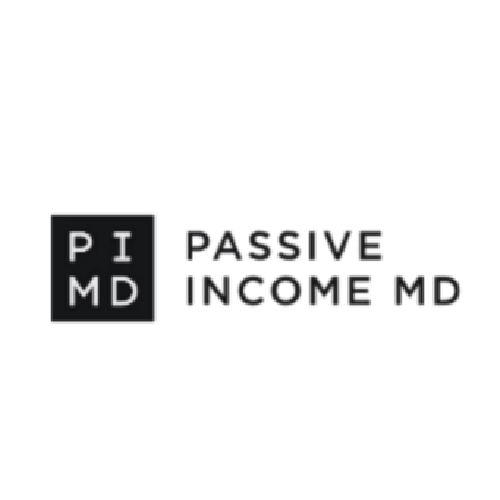As we enter Q4 of 2024, the investment landscape is poised for a significant shift from the past 24 months. Following the 0.5% interest rate cut by the FED last month, the multifamily market is gearing up for increased transaction volumes and stronger asset evaluations, encouraging sellers to list more properties. As major markets see high population growth and an oversupply of new apartments, investors are turning to emerging submarkets. This article explores strategies for investing in these dynamic areas.
What is an Emerging Submarket?
Emerging submarkets are areas within larger real estate markets that are experiencing rapid growth and development but have yet to reach their full potential. These submarkets often offer investors the opportunity to enter at lower prices with the potential for significant appreciation as the area grows. Often these emerging markets are considered to be in the “path of progress”. An indicator of a market in the path of progress is the city pouring money into the growth and development of infrastructure.
Key Characteristics of Emerging Submarkets
Affordability:
Prices in emerging submarkets are often lower than in well-established markets, drawing in investors and residents who want more affordable housing options. For example, as Atlanta experiences rapid growth and rising housing costs, many buyers are moving to the outer rings of the city. Areas like Dawsonville and Decatur GA, positioned in the path of progress, are now emerging as high-growth submarkets.
Population Growth:
Rapid population growth, driven by migration, job creation, or new infrastructure, signals the rise of an emerging submarket. As demand increases, housing and commercial development follow suit. Phoenix, one of the fastest-growing MSAs in the country, has seen a significant population influx due to its proximity to California. Submarkets like Avondale, Peoria, and West Glendale have experienced tremendous growth, with scheduled apartment deliveries growing inventory by another 59.4% to accommodate the growing population.
Job Market Expansion:
A booming job market, especially in industries like tech, healthcare, and manufacturing, defines emerging submarkets. New companies moving into the area drive workforce growth, which increases demand for housing. Dallas exemplifies this with its impressive job market expansion—ranking #1 in the nation for job growth, adding over 600,000 jobs in the past five years alone.
Infrastructure Development:
Improvements in infrastructure, such as new highways, public transit, and commercial spaces, attract both residents and businesses to burgeoning markets. Enhanced transportation and amenities make these areas more desirable and support their rapid growth.
Investment Opportunities:
Investors flock to emerging submarkets for their higher potential returns and less competition. Lower acquisition costs, combined with the likelihood of future appreciation, create prime opportunities for investors to maximize profits as the area matures. A perfect example of this is Viking Capital’s newest investment opportunity in the emerging submarket Waxahachie, located just 25 minutes south of Dallas.
Proximity to Major Markets:
Emerging submarkets often benefit from their proximity to established urban centers. People and businesses looking for affordable alternatives without sacrificing access to major amenities drive growth in these areas. This proximity not only boosts occupancy rates but also ensures stronger monthly NOI (Net Operating Income), making it one of the most attractive advantages of investing in emerging markets.
Government Incentives:
Local governments frequently offer tax breaks or development-friendly policies to encourage investment in emerging submarkets, making them even more appealing for investors seeking growth opportunities. These incentives can significantly improve the return on investment, providing a solid foundation for long-term success.
Are Investments in Emerging Markets Successful?
Emerging Markets Offer Potential for High Returns:
These growing economies have the potential for higher returns compared to more developed markets. Lower property costs and rapid growth allow investors to capitalize on the appreciation as these areas expand. Historical data shows that emerging submarkets often outperform more established markets, providing substantial gains. This, coupled with the benefit of lower competition, allows investors to strategically invest before the market becomes saturated.
Economic Growth Opportunities:
Emerging markets are often at the forefront of rapid urbanization and industrialization. These trends create a stronger demand for housing, commercial spaces, and infrastructure development. Additionally, many growing cities feature young, growing populations and increasing consumer demand, leading to steady economic growth. As these populations expand, so does the need for real estate, positioning investors to benefit from long-term growth.
Risks of Emerging Market Investments
Investing in emerging submarkets often involves higher risks than established markets due to less developed infrastructure and potential market volatility. To mitigate these risks, conducting thorough due diligence and market research is crucial. One key factor in the due diligence process is the rate of economic growth. When an emerging submarket experiences strong drivers like population increases, business and job growth, and retail development, risks are minimized. However, if a target submarket shows little to no development or lacks an infrastructure growth plan, risks increase significantly. An emerging market with multiple economic drivers is generally less risky than one dependent on a single industry or factor.
Strategies to Manage Risks in Emerging Markets
- Diversify Across Markets: Investing across a range of emerging markets reduces exposure to any single economy’s volatility. This diversification can protect against regional instability, currency fluctuations, or political changes that may impact one specific market. By spreading investments, you can achieve a balanced portfolio with returns driven by varied market cycles and growth trajectories.
- Monitor Political and Regulatory Risks: Emerging markets often experience shifts in political and regulatory landscapes, which can impact investment returns. Keeping an eye on regulatory changes, tax policies, and property laws helps investors respond proactively. Understanding the potential impacts of these changes is essential for long-term planning and stability.
- Build a Long-Term Strategy and Exit Plan: Successful investing in emerging markets requires a long-term vision and a well-defined exit strategy. These markets may experience temporary volatility, so it’s critical to plan for long-term growth. An exit strategy, like selling when the area reaches a certain level of development or appreciation, allows for flexibility and risk management.
Key Takeaways: Timing is Everything
Investors seeking new opportunities should closely monitor economic trends and growth drivers. Viking Capital evaluates hundreds of deals every month maintaining a strong pulse on the current landscape and future of the real estate market. To succeed in emerging submarkets, it’s crucial to fully understand both the local area and the surrounding region’s economic stability and growth potential. Targeting areas where demand is rising along the path of progress places investors in a prime position to capture higher returns.
Timing is the key to maximizing potential in these markets. By aligning investments with the city’s growth trajectory, investors can enter the market ahead of others, achieving the highest possible upside with minimal competition. In emerging submarkets, timing makes the difference between seizing a lucrative opportunity and missing out
.
Are you ready to invest in an incredible emerging submarket?
Check out Viking Capital’s newest investment opportunity; The Townhomes at Bluebonnet. This 114-unit, 2021 A-Class community is located in the thriving Dallas MSA, just 25 minutes south of downtown.




















